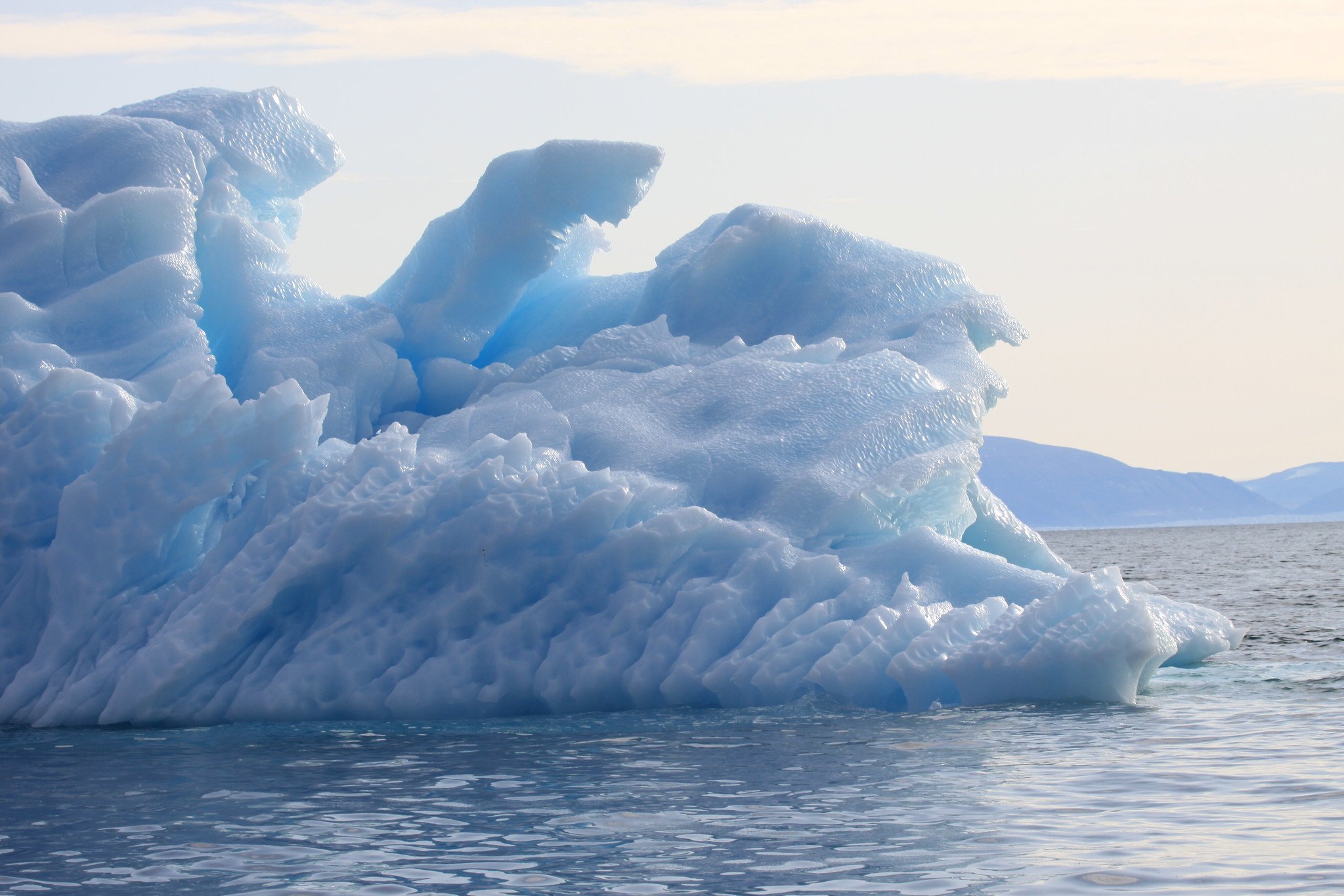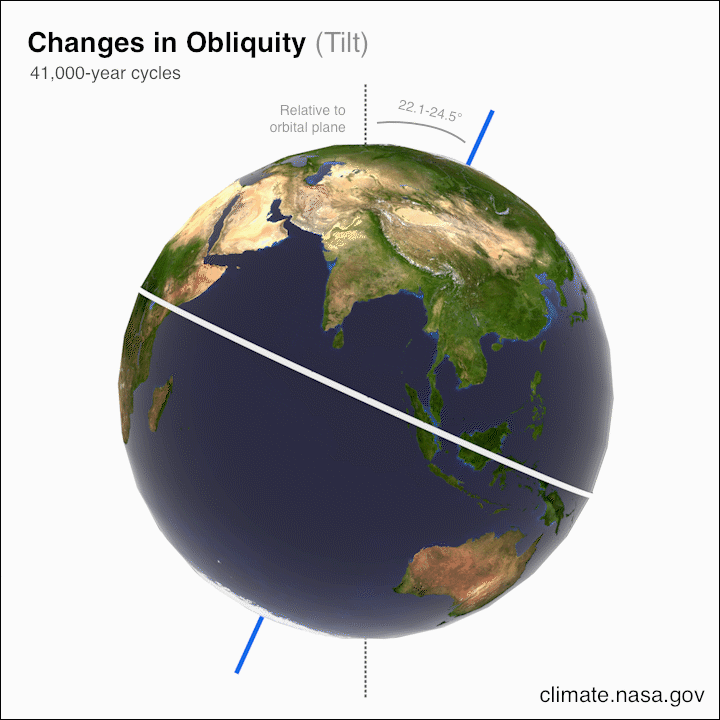What is Abrupt Climate Change?
Dr. Thomas M. Cronin*, U. S. Geological Survey, Florence Bascom Geoscience Center, Reston, Virginia 20192
Dr. Ingrid H. H. Zabel, Paleontological Research Institution, Ithaca, New York 14850
Published October 20, 2021
Understanding climates from the geological past is essential for understanding the context for today’s human-caused (anthropogenic) climate changes. One reason that records from the past are so important is that they can tell us about climate changes before human activities, and thus they can help us to distinguish between anthropogenic and natural climate variability. In addition, we can learn about the rates over which climate change can happen, from decades to millions of years, through natural geological archives such as ice cores from glaciers and ice sheets, tree rings, coral skeletons and mollusk shells, and ocean and lake sediments (among others).
The keys to understanding past climate changes first involve excellent chronology: age-dating of the archive records through a variety of methods. We need to know the age of climate records in order to draw conclusions about how rapidly or slowly the climate has changed in the past. Second, we need well-understood “proxies” linked to various climate conditions. Proxies are records from the past that preserve Earth’s climate history and substitute for direct measurements of climate variables like temperature and rainfall. Examples of proxies include geochemical, biological, and physical measurements in sediments, ice, trees, and corals. These proxies are used to reconstruct pre-historical patterns of air and sea temperatures, atmospheric chemistry and circulation, atmospheric greenhouse gas concentrations, glacier, sea-ice, ice sheet and sea level history, rainfall patterns, and carbon cycling, among many other environmental factors.
Figure 1: A variety of climate proxies.
What are natural causes of climate change? Many factors are involved, including:
changes in the sun’s output due to internal solar processes;
atmospheric aerosol and greenhouse gas emissions from volcanic activity;
changes in the reflectivity of the surface of the Earth due to changes in land ice, snow, and vegetation cover;
and changes in the distribution of oceans and continents through plate tectonics.
Among the most important are geographic and seasonal distribution of the amount of energy received from the sun (insolation) by changes in the shape of Earth’s orbit around the Sun, degree of tilt of the Earth on its axis (obliquity), and the wobble of the axis (precession). This orbital (or astronomical) forcing is the pacemaker of the ice-ages (glacial periods) over timescales of 10,000 to 400,000 years.
Though the timing of changes in insolation from orbital changes matches well with those of paleoclimate records, the changes in insolation are insufficient to cause the mean global 5-6 °C temperature swings that proxy records show took place during glacial cycles of the last 500,000 years. It is widely agreed that cooling and subsequent deglacial warming are amplified by changes in atmospheric greenhouse gas concentrations that occur in response to the changes in insolation. The difference between carbon dioxide (CO₂) concentrations during glacial periods (190 parts per million by volume, ppmv) and interglacial periods (280 ppmv) occurs mainly through uptake and release of CO₂ by the world’s oceans.
Abrupt climate change represents a distinct class of climate variability occurring over millennial (1000-year) timescales, featuring very rapid transitions from one climate state to another, over spans of only decades. Abrupt climate changes are a fundamental feature of Earth’s climate. They are emblematic of “tipping points,” which often occur when the climate system passes a key threshold causing a “non-linear” climate response, that is, a magnitude of change that is out of proportion to the initial forcing or causal factors.
Possible tipping points are of special concern in today’s high latitudes where most of Earth’s ice exists, including the Greenland and Antarctic ice sheets, glaciers, and floating ice shelves (or ice tongues) that extend off glaciers and sea ice (frozen ocean water). Feedbacks involving glacial and sea ice melting, warming temperatures and changes in carbon storage, and other processes can amplify the effects of elevated greenhouse gas concentrations, potentially leading to tipping points. Thus abrupt climate changes pose potential surprises in our future climate.
Conceptual sketch of sea ice and ice sheet conditions during the end of a glacial cycle, top to bottom. (a) peak glacial, also known as the glacial maximum about 22,000 to 20,000 years ago, (b) late glacial, referring to inception of deglaciation about 20,000 to 18,000 years ago when land and sea ice melting began, and (c) termination conditions, referring to the end of the glaciation, about 18,000 to 10,000 years ago. (a) Extended Ice Sheet and Ice Shelf (Jakobsson et al., 2016). No occurrence of phytoplankton productivity, terrigenous organic matter input, nor ice algae production underneath ice sheet; total sedimentation may have decreased to zero (Stein et al., 2017). (b) Ice sheet reached the shelf edge, with a polynya situation caused by katabatic winds which allowed sea ice algae and phytoplankton production (Stein et al., 2017). (c) Major retreat and decay of the ice sheet resulted in high sediment ice-rafted debris (IRD) input by calving icebergs (Stein et al., 2017). Phytoplankton and algal activity are virtually shut down during the glacial maximum due to the think ice shelves, but biological activity and flux of terrigenous organic material to the deep ocean begins during the late glacial and in the case of ice-rafted debris, the termination interval. Image modified from Stein et al. (2017) and Jakobsson et al. (2016).
Our understanding of many past abrupt climate changes stems from major advances in paleoclimateology beginning in the 1980s with the discoveries of what we now call Heinrich Events (HE) and Dansgaard-Oeschger (D/O) cycles, named after their discoverers, Helmut Heinrich, Willi Dansgaard, and Hans Oeschger. Six HEs were first identified from sand layers blanketing the northern North Atlantic Ocean, recovered in sediment cores, that were deposited between 70,000 and 11,500 years ago. Coarse-grained sediment like sand can only be transported to the deep sea in the central North Atlantic through sediment melting out of icebergs and sea ice, so HEs signify massive iceberg discharges from past ice sheets that bordered the North American and European sides of the North Atlantic. Heinrich Events have occurred in a nearly cyclic pattern about every 5000-6000 years, lasted about 1000-1500 years each, and altered the climate by disrupting patterns of ocean circulation, poleward transport of ocean heat, atmospheric temperatures, and deep-water formation.
Dansgaard-Oeschger (D/O) events were first recognized in ice cores taken from the Greenland Ice Sheet, based on stable oxygen isotope (¹⁸O/¹⁶O) ratios from records of glacial ice over the period 100,000 to 18,000 years ago. Each D/O event consists of stadials (cooler phases) and interstadials (warmer phases). The rapid regional temperature rise at the onset of a D/O event is extremely fast; it can exceed 10 °C in only decades!
Thus, HEs and D/O events are two distinct aspects of past abrupt climate changes during glacials: HEs signify catastrophic changes in land-based ice sheets, whereas D/O events signify rapid changes in atmospheric temperature and circulation over the Greenland Ice Sheet. While HEs and D/O events are associated with the most rapid known Pleistocene climate changes, scientists have found evidence of similar abrupt climate changes, but of lower amplitude, during interglacial periods such as the one we’re in now, the Holocene interglacial (11,500 yrs ago to present) and the previous interglacial (known as the Eemian interglacial, about 125,000 years ago). These rapid changes during interglacial intervals have become a subject of intense research interest.
Why do these abrupt events happen? The causes are only partially understood. For example, one hypothesized cause of HEs involves the internal dynamics of glacial-age ice sheets and adjacent ice shelves. The idea is that once they have reached a certain critical size and thickness, the edges of ice shelves start to break off more rapidly, perhaps driven by warm, sub-ice shelf ocean waters. This pattern of ice sheet build-up and collapse—sometimes referred to as the “binge-purge” model—had major impacts on ocean circulation due to an input of fresh water to the surface ocean, and on atmospheric patterns due to changes in ice sheet thickness. Moreover, sediment proxy records and climate model simulations show that each HE is distinct in terms of its impacts on ocean circulation and ice sheet dynamics. In sum, Heinrich Events represent major changes in Earth’s atmospheric, ocean, and ice, leading to regional climate change in the Northern Hemisphere and, to a lesser extent, globally.
Explaining D/O cycles is equally challenging, especially their quasi-cyclicity (occurring about every 1500-1600 years), and the abrupt warming (regionally 8 to 16 °C in just decades) at the onset of a D/O event followed by the relatively slow step-wise cooling lasting for about 1000-1500 years. Scientists have suggested causes such as changes in insolation amplified by atmospheric processes, changes in ocean circulation (specifically, Atlantic Meridional Overturning Circulation (AMOC), a large system of ocean currents), and a combination of sea-ice retreat during the warming phase followed by gradual ice-shelf growth during the cold phase. Notably, the temperature changes from D/O events are much greater in the Arctic than in the Antarctic. And when a D/O event occurs in the northern hemisphere, it does not occur in the southern hemisphere until centuries later. This pattern—called the “bi-polar seesaw”—points to a role of ocean circulation in transferring the impact of the D/O events globally.
Recently, new paleoclimate records, notably greenhouse gas records of methane (CH₄) and carbon dioxide, have shed new light on HEs and D/O events. For example, century-scale increases in atmospheric CO₂ concentrations and even more rapid rises in CH₄ concentrations during two Heinrich events around 16,000 years ago and 39,500 years ago suggest a role for tropical atmospheric circulation, rainfall, and carbon storage in plants and soils. In general, the links between greenhouse gases and proxy reconstructions of millennial time-scale impacts suggest that the scale and duration of HEs and D/O events likely depends on whether Earth is in a warm or cool background climate state.
What does abrupt climate change mean for our lives today and in the future? Today’s rapidly rising greenhouse gas concentrations make understanding abrupt changes of the future a critical focus of study that involves paleoclimate research on rapid change in partnership with improved climate and glaciological modeling. Abrupt climate changes pose potential surprises in our future climate, so it is vital that we better understand the climate system’s thresholds and maximize our ability to predict abrupt climate change and its impacts.
* TC was funded by the U.S. Geological Survey Climate Research and Development Program. We are grateful to Robert Ross for valuable input on the text. Any use of trade, firm, or product names is for descriptive purposes only and does not imply endorsement by the U.S. Government.
References
Jakobsson, M. et al. 2016. Evidence for an ice shelf covering the central Arctic Ocean during the penultimate glaciation. Nature Communications 7, 10365. Link.
Stein, R., Fahl, K., Gierz, P., Niessen, F. & Lohmann, G. 2017. Arctic Ocean sea ice cover during the penultimate glacial and the last interglacial. Nature Communications 8, 373. Link.







